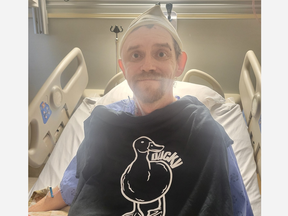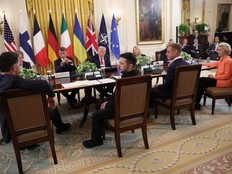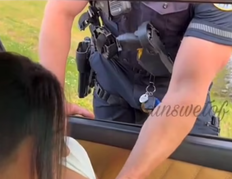In Stratford, ultra-rare deadly violence still resonates one year later
One year ago, a quiet northwestern Stratford neighbourhood was rocked by a horrific act of violence – the city’s first homicide in nearly two decades.

Article content
One year ago, a quiet northwestern Stratford neighbourhood was rocked by a horrific act of violence – the city’s first homicide in nearly two decades.
Just before 11 p.m. on Aug. 1, 2024, 31-year-old Ricky Bilcke opened fire on his neighbours, Jonathan Bennett, 36, and David Tokley, 43, with a high-powered rifle. He then used a shotgun to shoot Bennett’s partner, Stephanie Irvine, before firing several more shots and turning the gun on himself.
Recommended Videos
Bilcke was pronounced dead at the scene. Bennett later died at Stratford General Hospital, while Tokley and Irvine sustained significant, life-altering injuries.
The mass shooting marked Stratford’s first homicide since 2005 and its first shooting death since 1993.
One year later, Stratford Mayor Martin Ritsma said the event remains difficult to comprehend.
“The first word that comes to my mind still is disbelief,” Ritsma said. “I think we sometimes believe that we are in a quiet, rural city – a city with a town atmosphere. (When) something of this nature happens, it causes a little bit of disbelief. I think that’s still with me today. However, we definitely know it is something that can happen to any community, any size, anywhere across this country.”
Bilcke’s murder-suicide was the first of two fatal shootings in Stratford within a matter of months. In the early hours of Oct. 15, Kassidy Ballantyne-Holmes was shot and killed. Keith Savile was charged with several offences, including second-degree murder, possession of a weapon for a dangerous purpose, and unauthorized possession of a firearm. Savile also faced weapons trafficking and manufacturing charges.

Police also reported a “shooting incident” on Railway Avenue in late January, which was described as a targeted attack.
Despite these incidents, Ritsma said Stratford remains a safe community.
“I would believe that before this incident and after this incident, people would characterize the city of Stratford as a quiet, safe community,” he said.
Police said Bilcke’s rampage stemmed from an ongoing dispute with Bennett and Irvine. Officers had responded to the street approximately 11 times in the months leading up to the shooting to address complaints from the two parties involved. Stratford police Chief Greg Skinner confirmed recently that alcohol was a contributing factor.
Last year, Skinner said the force was reviewing protocols, including how it handles neighbour disputes and its approach to active shooter training. Since then, Stratford police and its partners have trained six mediators in Huron-Perth to help de-escalate ongoing disputes.
“Whenever you live in a situation where you’re very close to your neighbours, or you’re in a workplace where you may not like your fellow workmates, there’s opportunities for conflict, and we all have a responsibility to try to resolve conflict before it escalates into violence. These things can escalate into violence very quickly,” Skinner said.
In the five months since the new program launched, police mediators have been involved in three interventions.
“In all three of those situations, those conflicts are in a much better place than they were beforehand,” Skinner said. “I’m not about to say that they will never flare up again, but I think sometimes people just need somebody to listen to them.”
Stratford police have not made major changes to their active shooter training, which largely focuses on incidents inside buildings such as schools, workplaces or theatres. That’s because situations like the Bradshaw Drive shooting, which happened outside, are difficult to simulate, Skinner said.
While the principles of immediate, rapid deployment still apply, officers are now discussing more hypothetical scenarios to help prepare for volatile, violent situations, he added.
“We just have to think a little bit differently, given the scenario that we’re entering. While we haven’t changed our protocols, we have talked a lot about the ‘what ifs’ and (have gone through) different scenarios to support and give some confidence to our members,” Skinner said.
Although an internal investigation into the shooting was completed, Skinner said the findings are unlikely to be made public.
Stephanie Rae, a spokesperson with the Office of the Chief Coroner, confirmed last year the case did not meet the criteria for a mandatory inquest. Last week, she said no decision had been made regarding a discretionary inquest.
“There is no timeline for when a request for a discretionary inquest can be made,” Rae said. “It can be requested by a regional supervising co-ordinator at the end of a death investigation, or a family member could request a discretionary inquest at a later date.”
Skinner said if given the opportunity, he would tell Irvine and Tokley he is “sorry this happened to them” and emphasized the role of police is to serve and protect.
“If there is anything that we could have done differently, then we are certainly open minded and all ears with respect to what their expectation of us, not only the night of but the preceding interactions with police prior to that night,” he said.
Ritsma, who visited Tokley in hospital multiple times after the shooting, said the recovery was remarkable.
“(It was a) head wound that most people thought was going to be fatal and or a disability forever,” he said.

Ritsma confirmed both Tokley and Irvine have since left the Stratford community, though his concern for them remains.
“That caring and concern, even though they are no longer residents of Stratford, still is intact,” he said.
Neither Irvine nor Tokley responded to requests for comment.
Ritsma said the memory of the shootings will remain with those affected, but conversations with Bradshaw Drive residents have given him hope.
“I think it’s another good sign of a healthy community – the ability to move forward,” he said. “I was really heartened by that.”
Meanwhile, Skinner said the police service is working to increase the number of officers on the street.
“Our communities are changing, with an increase in conflict, and more people are being marginalized or falling victim to addiction and mental-health issues,” he said.
He also noted that fear doesn’t always align with statistics.
“I would suggest that statistically, we are no worse off than we have been in the recent past, but perception becomes a reality, and if people don’t feel safe, people are going to be concerned about their safety,” Skinner said.
watwood@postmedia.com













Postmedia is committed to maintaining a lively but civil forum for discussion. Please keep comments relevant and respectful. Comments may take up to an hour to appear on the site. You will receive an email if there is a reply to your comment, an update to a thread you follow or if a user you follow comments. Visit our Community Guidelines for more information.